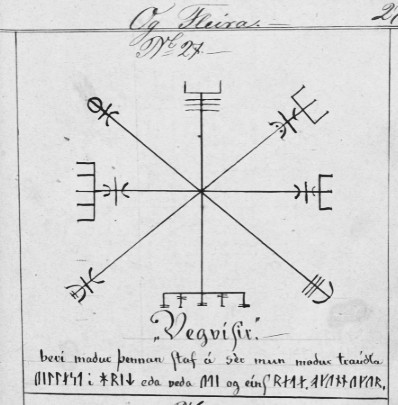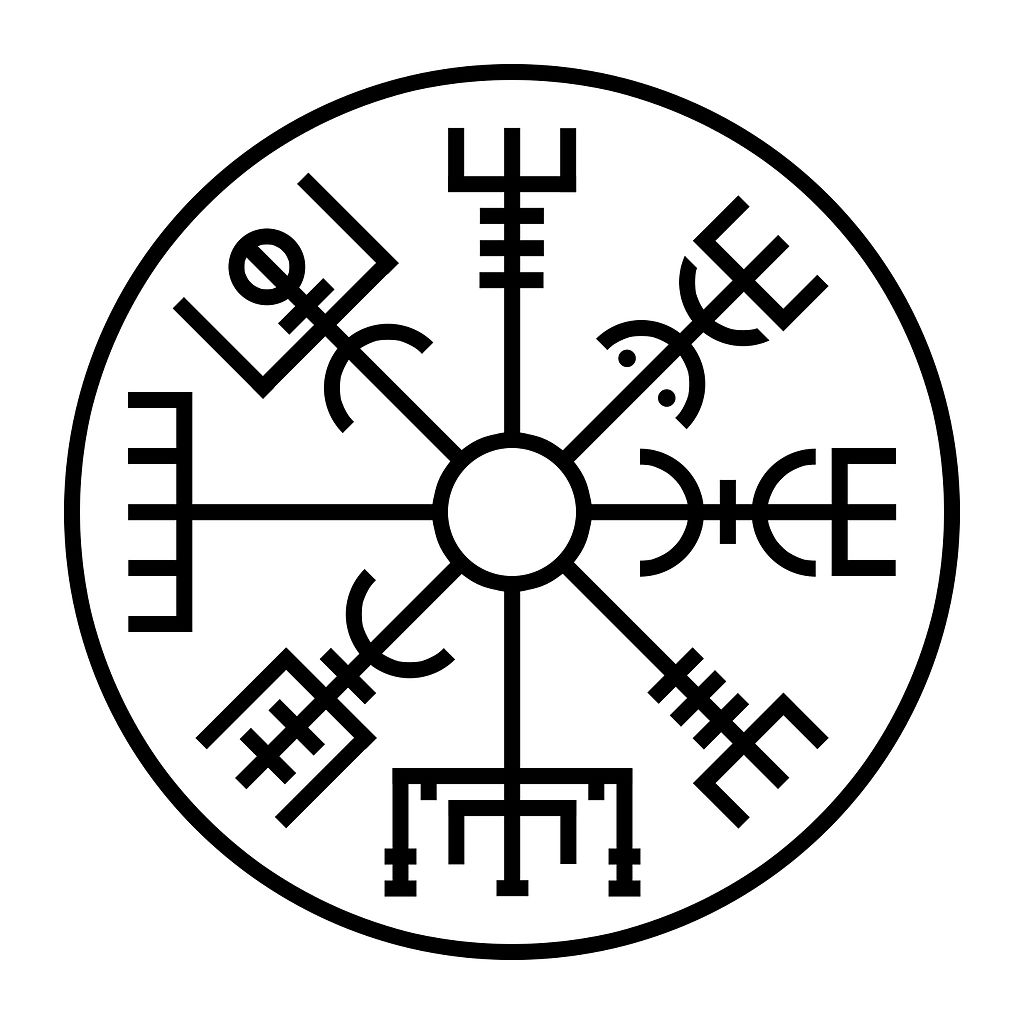Legends say that lost and lonesome Viking sailors needn't fear unfamiliar seas and thunderous skies with the vegvisir, the Viking compass. This runic compass is comprised of eight rune staves (vegvisir symbols). Modern translations of the vegvisir include 'wayfinder' or 'signpost.'
Icelandic and nordic travelers would use this ‘wayfinder’ to find their way in bad weather, foreign seas, and lands with the runic compass.
Vegvisir Meaning
Vegur refers to the first part of this nordic word, meaning ‘way, road, or path.’ Visir refers to ‘path’ or ‘guide.’
The Icelandic people developed this word and the subsequent vegvisir meaning by combining the words’ vegur’ and ‘visir.’
How do you Pronounce Vegvisir?
The vegvisir pronunciation is ‘Vegg vee seer.’
Phonetically, you pronounce the first third with a hard ‘g,’ like ‘egg’ and not ‘edge.’ Then, pronounce the second third like ‘bee,’ but with a ‘v.’ Finally, pronounce the last third ‘seer’ like ‘beer.’
Is Vegvisir Actually Viking?
The modern theory believes that the vegvisir is closely related to the Vikings and ancient Norse people. Wandering Norse and Viking travelers who strayed too far or got caught in rough seas are said to have relied on this mysterious wayfinder.
The problem with historical artifacts is that verifying their origins is extremely difficult. Many claim this is the Viking vegvisir, but with it only being documented in a couple of sources, there is no evidence to support this claim.
Vegvisir Attestations
The 1860 Huld manuscript, collected by Geir Vigfusson in the Icelandic town of Akureyri, holds the earliest attestation of the Viking word Vegvisir and other important Nordic terms like the Helm of Awe.
It contains a leaf of the manuscript with an image of the vegvisir, its name, and a prose statement:
If this sign is carried, one will never lose one’s way in storms or bad weather, even when the way is unknown
The Huld is one of many Icelandic manuscripts dating from the late 1800s to the early 1900s and includes collections of items in use in earlier days.
These include:
- Runes
- Runic alphabet
- Viking symbols
- Viking runes
- Magic symbols
- Sigils
Other surviving Icelandic manuscripts include the Galdrabók by Galdrastafir dated ca. 1600. This small Icelandic grimoire (book of magic) features 47 old Norse magic spells and Icelandic magical staves and sigils.
Some scholars believe the vegvisir has a home in the Galdrabók, whereas others contest this.

Is Vegvisir a Pagan Symbol?
Although the modern world sometimes sees the vegvisir as a neo-pagan symbol, this Nordic compass is more traditionally recognized as an ancient Norse symbol or a Viking compass.
The compass comprises eight Viking (not-pagan) rune staves that radiate from a central point in a circle.
Where do you put a Vegvisir?
The Icelandic grimoire, the Galdrabók, reported that the vegvisir should be drawn on a person’s forehead to provide the best guidance and protection.
But what do you draw it with? A pencil? A crayon?
No.
Blood was the only acceptable pen.
What is the Difference Between Vegvisir and Aegishjalmur?
The main difference between the vegvisir compass and the aegishjalmur (Helm of Awe) lies in their purpose. The Icelandic magical stave, the ‘wayfinder,’ helps the bearer find their way in extreme weather.
In contrast, the Helm of Awe (or Helm of Terror) is an Icelandic magical stave used to banish the bearer’s fear and ensure victory by striking fear in the hearts of their enemies.
These two legendary tools share some similarities. For example, blood was the only acceptable method to draw the Viking symbol of protection, the aegishjalmur, the Helm of Awe, and the Viking compass (vegvisir).
They also use rune staves in their construction, although they are different.
Does Vegvisir Work as a Compass?
There is no direct evidence that it works.
Did People use Vegvisir?
Unfortunately, we don’t have anything available to tell us whether the Viking people used this Viking symbol as a ‘wayfinder’ during the Viking age or earlier.
It’s entirely possible that the Viking people used the vegvisir, and it’s exciting to think that they did, but there’s no evidence of this.
What does a Vegvisir Tattoo Mean?
If the ‘Vikings’ used this vegvisir as a runic compass, the vegvisir tattoo would also symbolize guidance and protection.
Can You Get a Vegvisir Tattoo, and is it a Common One?
Norse and Viking tattoos like the Vegvisir are popular tattoo choices. The vegvisir tattoo as a symbol of protection is even popular among celebrities.
This famous Icelandic singer and actress Björk sports the Norse protection symbol of the vegvisir symbolic tattoo on her left upper arm for all to see.

